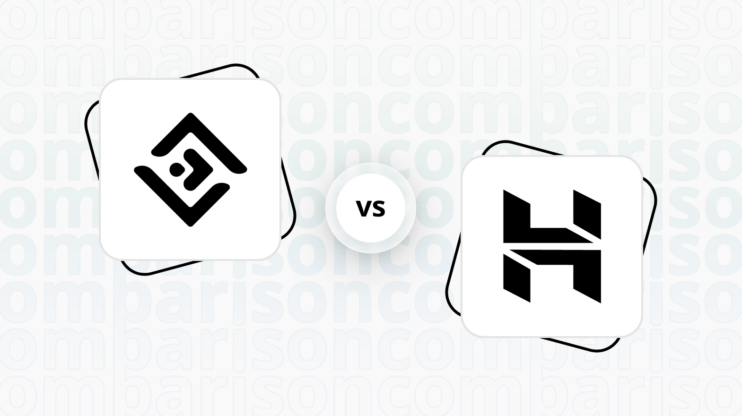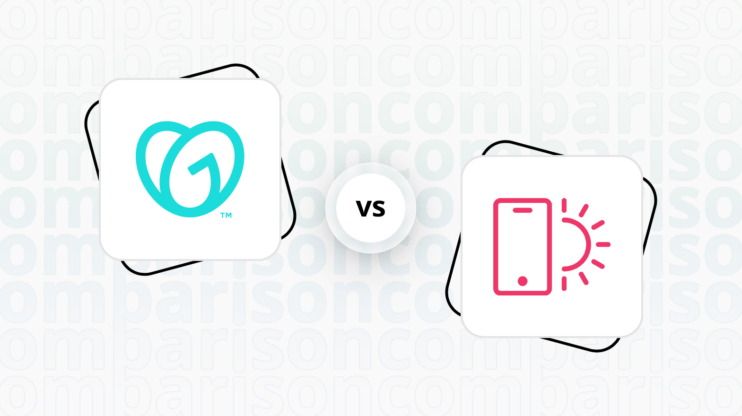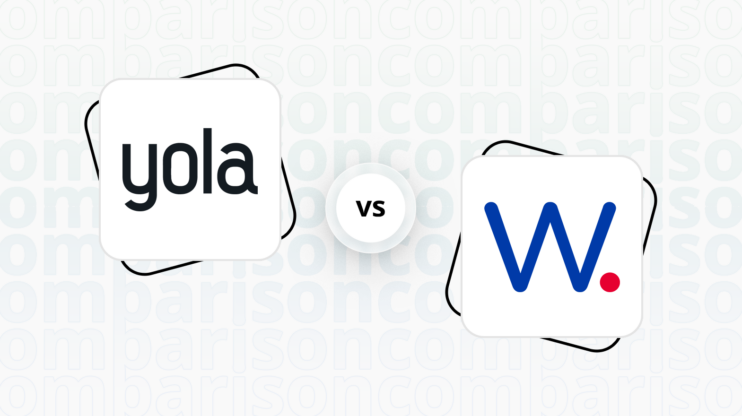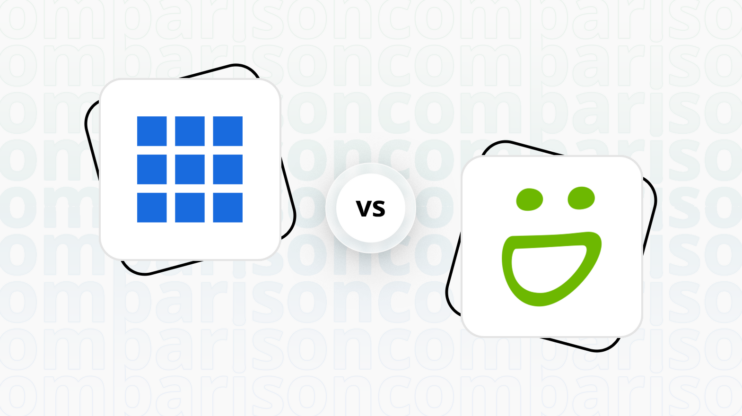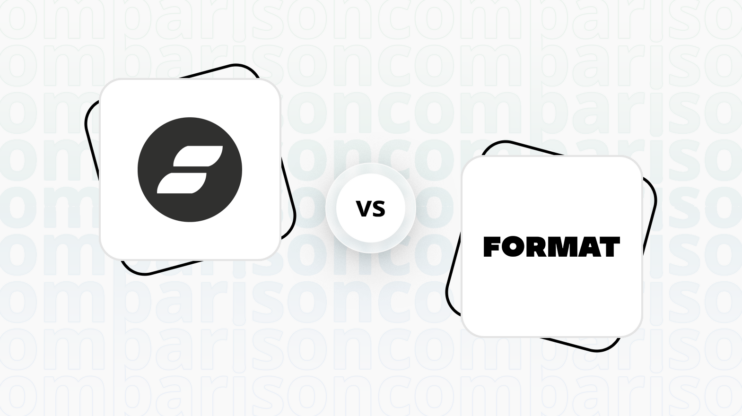Final verdict
Shopify and SubHub cater to different needs, making them suitable for distinct types of users.
-
Shopify (Overall Grade: 8.1/10)
is a powerful ecommerce platform ideal for businesses looking to create and manage online stores. It offers a comprehensive set of tools for product listing, payments, and order fulfillment. Shopify excels in ecommerce functionalities, design templates, and customer support, making it the preferred choice for serious online retailers. When comparing Shopify vs SubHub, Shopify stands out for its robust ecommerce capabilities and extensive integrations. -
SubHub (Overall Grade: 5.6/10)
is designed specifically for creating and managing membership sites. It provides tools tailored for content creators and entrepreneurs who aim to build a community and monetize their content. SubHub emphasizes ease of use and efficiency, making it a good choice for those looking to start or grow a membership-based business. However, in the Shopify vs SubHub comparison, SubHub falls short in ecommerce functionalities and overall versatility.

|

|
|
|---|---|---|
|
Design functionalities & templates |
8.2 |
6.8 |
|
Ease of use |
7.5 |
7.7 |
|
Ecommerce |
9.2 |
5.9 |
|
Website Editors |
7.9 |
6.9 |
|
Product testing options |
8.1 |
7.0 |
|
Price |
8.2 |
6.8 |
|
Hosting quality |
9.0 |
5.5 |
|
Website speed optimization |
7.8 |
5.6 |
|
Plugins and integrations |
8.7 |
5.7 |
|
Marketing features |
8.8 |
5.7 |
|
Customer support |
8.6 |
6.3 |
|
Security |
9.0 |
4.0 |
|
AI capabilities |
7.9 |
0 |
|
User Management |
6.5 |
5.2 |
Best for ecommerce
 9.2
9.2
 5.9
5.9
Verdict
: SubHub is tailored for membership sites, while Shopify excels in comprehensive ecommerce functionalities.
-
Shopify
: With a score of 9.2, Shopify is a powerhouse in the ecommerce space. It offers a wide array of tools for creating and managing online stores, including advanced inventory management, multi-channel selling, and detailed analytics. Shopify’s extensive app library and features like Augmented Reality set it apart, making it ideal for businesses looking to scale. However, when comparing Shopify vs SubHub, Shopify’s extensive features might be more than what a membership-focused site needs. -
SubHub
: Scoring 5.9, SubHub is designed specifically for membership sites, offering tools for content creators and entrepreneurs to build and monetize their communities. While it supports basic ecommerce functionalities like PayPal and Stripe integration, it lacks the depth and scalability of Shopify’s ecommerce features. SubHub is best suited for those looking to manage subscriptions and provide exclusive content rather than running a full-fledged online store.
Best for informational & business websites
 6.8
6.8
 7.2
7.2
Verdict
: When comparing Shopify vs SubHub for informational business websites, SubHub has a slight edge due to its focus on membership sites and ease of use, making it more suitable for content creators and entrepreneurs looking to build a community.
-
Shopify
: Shopify, with a score of 6.8, is primarily an ecommerce platform. While it offers professional and sleek templates, its strengths lie in managing online stores rather than informational sites. The platform may feel overly complex for simple informational needs, but it excels in providing robust ecommerce functionalities and a wide range of plugins and integrations. -
SubHub
: SubHub, scoring 7.2, is designed specifically for creating and managing membership sites. It offers customizable templates and tools tailored for content creators and entrepreneurs. SubHub emphasizes ease of use and efficiency, making it an ideal choice for those looking to build a community and monetize their content. Its focus on membership functionalities makes it more suitable for informational business websites compared to Shopify.
Detailed comparison
Design functionalities & templates
Design FunctionalitiesRepresents how well each platform allows for creative design and customization of websites.Score Components:
- Template Variety (30%): Range and quality of design templates.
- Customization (30%): Flexibility and options for design alterations.
- User Interface (20%): Ease and intuitiveness of the design process.
- Responsiveness (10%): Adaptability to different devices and screen sizes.
- Innovation (10%): Unique design features and tools.
 8.2
8.2
 6.8
6.8
Winner: Shopify.
If you’re looking for a platform that offers more professional and ecommerce-focused design functionalities and templates, Shopify is the preferred choice.
Shopify’s templates are sleek and professional, ideal for ecommerce sites. They offer a sophisticated look with a focus on online stores. While the free template selection is not large, Shopify’s premium theme store provides a variety of industry-specific options, offering advanced features for a strong brand presence.
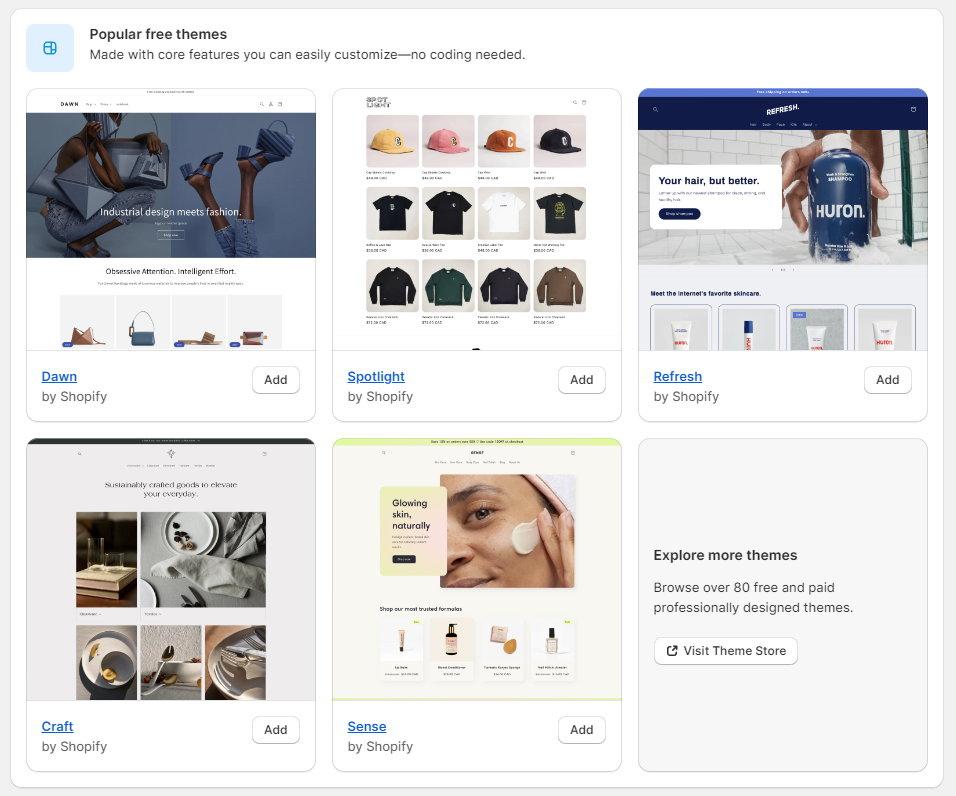
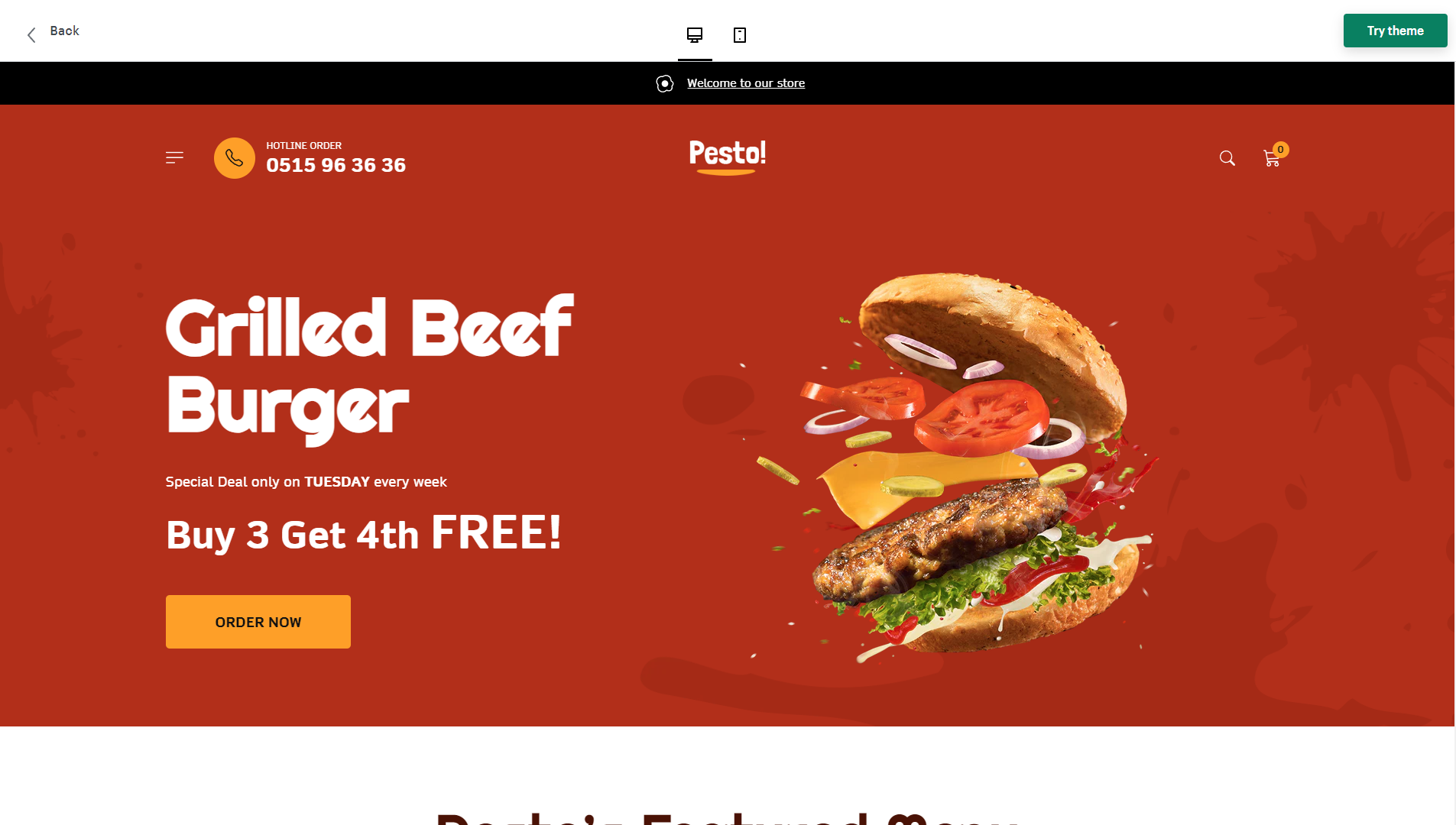
On the other hand, SubHub offers a variety of customizable membership website templates designed to cater to different needs and themes. These templates are fully customizable, allowing users to modify layouts, add or remove sections, and tailor content to fit their brand, ensuring flexibility in the design process.
Get a head start on website creation with AI
Create a custom website tailored to your business needs 10X faster with 10Web AI Website Builder!
Ease of use
Ease of useReflects the platform’s overall user-friendliness.Score
Components:
- Learning curve (40%): Quickness and ease of getting started.
- Interface design (30%): Simplicity and intuitiveness of layout.
- User guidance (20%): Quality of tutorials and support.
- Flexibility (10%): Adaptability to various user skills.
 7.5
7.5
 7.7
7.7
🏆 Winner: Draw
. Both Shopify and SubHub offer user-friendly platforms with a focus on ease of use. Shopify, scoring 7.5, is praised for its drag-and-drop interface, intuitive layout, and extensive resources for beginners. SubHub, with a slightly higher score of 7.7, is designed specifically for creating and managing membership sites, emphasizing ease of use and efficiency. However, Shopify has a more vibrant community of users and extensive learning resources, which can contribute to the ease of use. SubHub, on the other hand, lacks a large community of users, which might make it harder for users to find help and support.
Learning Resources
🏆 Winner: Shopify
. While both platforms offer solid learning resources, Shopify goes a step further with its wide array of detailed tutorials and active community forums, making it easier for users to learn and adapt.
For ecommerce
EcommerceMeasures the platform’s effectiveness in supporting online business activities.Score Components:
- Ecommerce themes and templates (20%): Variety and design of templates.
- Product management (25%): Ease of managing and organizing products.
- Payment options (25%): Variety and convenience of payment methods.
- Ecommerce features (20%): Features for managing an ecommerce store.
- Integration (10%): Compatibility with external e-commerce tools and services.
 9.2
9.2
 5.9
5.9
Shopify, with a score of 9.2, is a leading ecommerce platform that provides a comprehensive set of features for online businesses. It offers tools for creating and customizing online stores, managing products, processing payments, and handling order fulfillment. On the other hand, SubHub, scoring 5.9, is a website builder designed specifically for creating and managing membership sites. It offers a range of tools tailored for content creators and entrepreneurs who aim to build a community and monetize their content.

|

|
|
|---|---|---|
|
Ecommerce themes and templates |
8.2 |
3.0 |
|
Product page customization |
8.5 |
6.5 |
|
Payment processing and commissions |
8.8 |
7.0 |
|
POS capabilities |
8.1 |
0.0 |
|
Payment gateways |
9.5 |
6.0 |
|
Product numbers |
9.0 |
5.0 |
|
Additional ecommerce features |
9.1 |
4.5 |
Shopify ecommerce features:
- Comprehensive store builder
- Shopify Payments and other gateways
- Advanced inventory management
- Multi-channel selling
- Abandoned cart recovery
- Detailed analytics and reporting
SubHub ecommerce features:
- Paypal and Stripe integration
- Physical and Digital product listings
- Pay-per view products
Ecommerce themes & templates
Shopify offers about 150 modern responsive themes for creating a virtual storefront, ensuring a good look on both desktop and mobile devices. While some themes are free, others cost between $170 to $380. In contrast, SubHub does not have ecommerce specific templates.
Product page customization
Shopify has a limit of three options per product, totaling 100 unique variations. This limit may not pose a significant constraint, and it is suggested that for products with numerous options, creating separate listings on Shopify can be a more manageable approach. While Shopify offers titles, descriptions, and image galleries with zoom effects, customization options like adding ribbons, size charts, and wishlists are not as straightforward. However, Shopify distinguishes itself with additional features through its extensive library of extra apps, offering functionalities like reviews, Facebook stores, eBay item importers, and a unique Augmented Reality feature for an enhanced customer experience.
On the other hand, SubHub offers a range of product page customization options, allowing for the addition of physical items, digital downloads, and pay-per-view content. Features include the ability to manage product variants, upload images, and set visibility preferences. Users can also implement SEO strategies through meta tags and manage tax settings. Additional functionalities include member-specific discounts, image carousels, and individualized shipping costs.
Payment processing
When it comes to payment processing, Shopify offers payments with typical charges of
2.9% + 30¢
per online transaction on basic plans, and lower fees for higher-tier plans. However, it adds extra fees for using other payment gateways. Shopify Payments is Shopify’s own payment processing gateway. It allows merchants to accept credit card payments directly on their store without having to integrate third-party payment providers. This simplifies the payment process, reduces transaction fees, and streamlines the handling of finances.
SubHub supports two main payment gateways: Stripe and PayPal. These integrations allow for secure payment processing for subscriptions and store items using debit or credit cards. The platform itself does not charge commissions on transactions.
Considering the features, availability, cost, and flexibility, Shopify appears to be a more robust and flexible ecommerce solution compared to SubHub. However, if you are looking to start or grow a membership-based business, SubHub might be a more suitable choice.
Website Editors
Website EditorsEvaluates the platforms’ website building and editing capabilities.Score Components:
- Customization tools (40%): Range and power of editing features.
- Editor usability (30%): User experience within the editor.
- Design flexibility (20%): Freedom in layout and design changes.
- Update and maintenance ease (10%): Simplicity of updating and maintaining the site.
 7.9
7.9
 6.9
6.9
🏆
Winner: Shopify
. Shopify’s editor, with a score of 7.9, excels in providing a streamlined, ecommerce-focused editing experience. It’s particularly beneficial for users who prioritize efficient management of online stores. The editor is straightforward, making it easy to add products, manage inventory, and set up payment methods. Shopify’s editor is optimized for sales and business growth, with built-in tools specifically designed for ecommerce businesses.
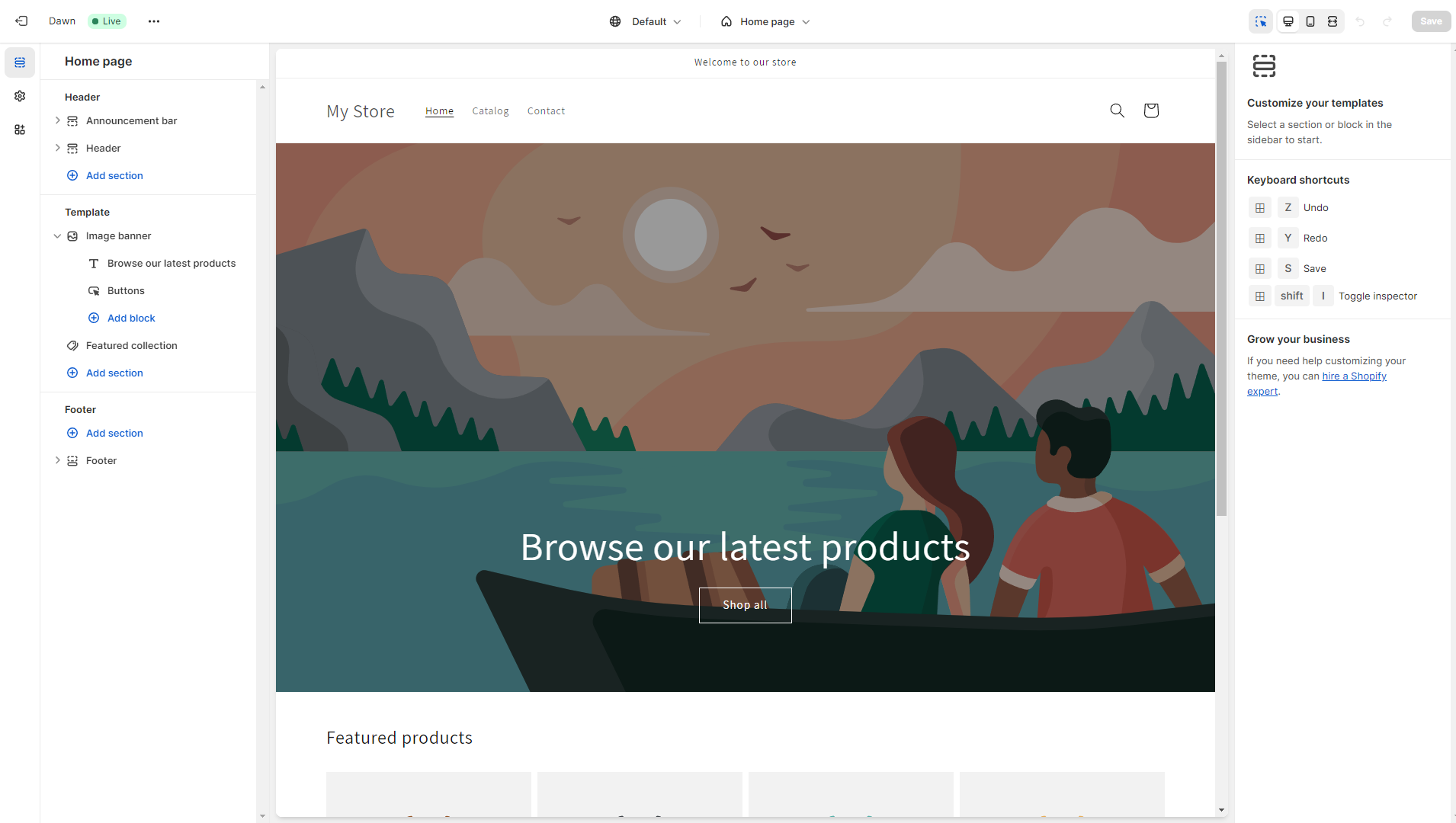
SubHub’s editor, scoring 6.9, offers a user-friendly website builder tailored for creating and managing membership sites, catering to content creators and entrepreneurs aiming to monetize their offerings. Its features encompass customizable templates, diverse content publishing options, and flexible subscription plans with seamless integration for recurring revenue through payment processors. Additionally, SubHub supports online course creation, provides marketing tools like landing page builders, and offers detailed analytics for monitoring website metrics.
Mobile editor/app
 8.0
8.0
 4.0
4.0
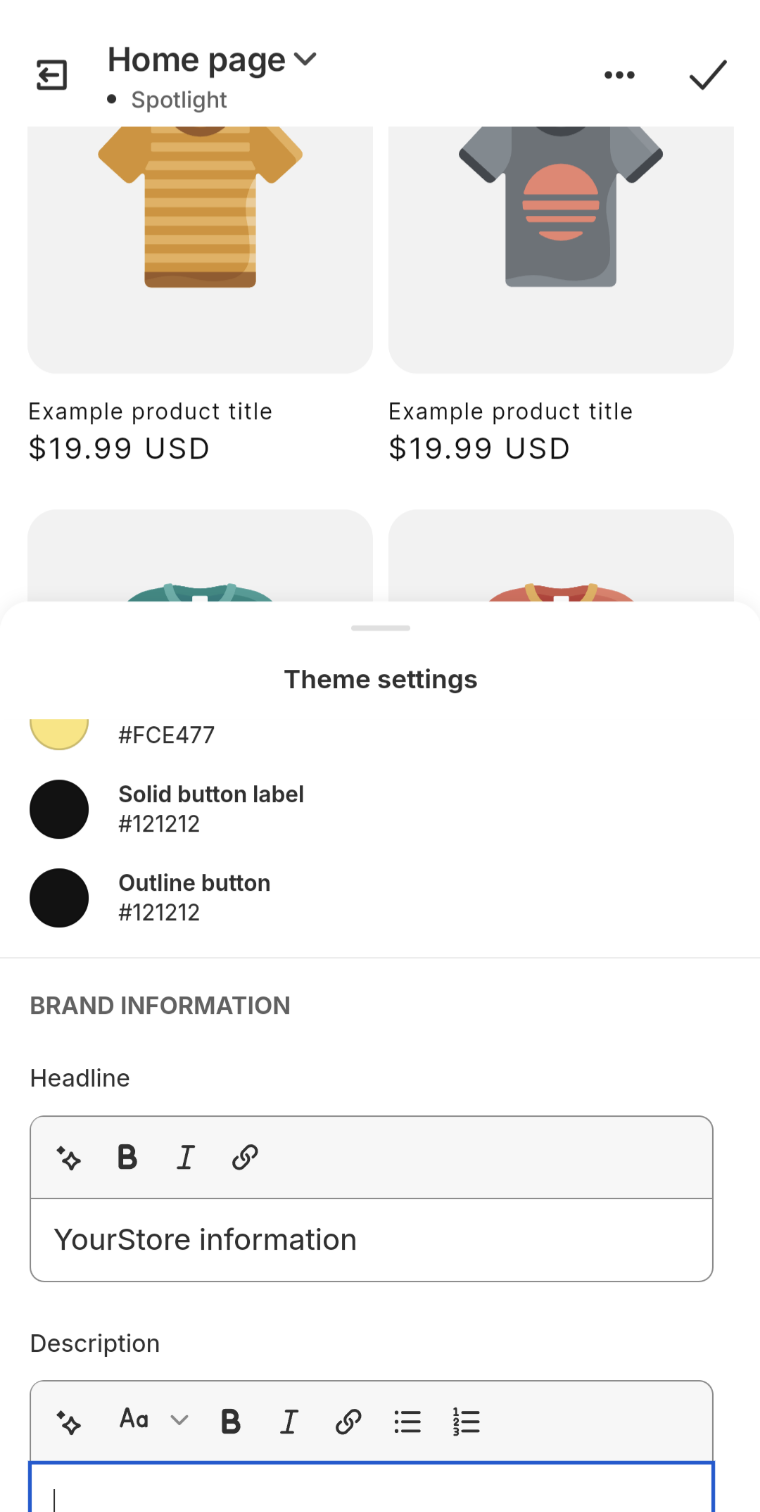
🏆
Winner: Shopify
. Shopify and SubHub both offer mobile capabilities, but they differ significantly in their offerings. Shopify has a dedicated mobile app that allows users to manage their online store, including adding, removing, editing, and rearranging content. This feature offers convenient on-the-go adjustments to the store’s appearance and layout.
On the other hand, SubHub does not have a dedicated mobile editor app. Users can manage some content on their website using the mobile browser version, but it’s not possible to change the layout and design of the website on mobile. Therefore, Shopify is the clear winner in this category due to its comprehensive mobile editing capabilities.
Product testing options
Product Testing OptionsAssesses the options for trying out platform features before commitment.Score Components:
- Trial quality (40%): Extent and usefulness of the trial or free version.
- Feature accessibility (30%): How many features are available to test.
- Trial duration (20%): Length of the trial period.
- Ease of transition (10%): Smoothness of moving from trial to paid plans.
 8.1
8.1
 7.0
7.0
Overall Result
:
Shopify Wins
. Shopify scores 8.1, while SubHub scores 7.0 in product testing options. Both Shopify and SubHub offer a 14-day free trial, allowing users to test their platforms. However, Shopify stands out by offering the possibility to test all features, including premium ones, during its free trial. SubHub also allows testing of premium features during the trial, but it falls short with its 7-day money-back guarantee compared to Shopify’s 14-day free trial.

|

|
|
|---|---|---|
|
Free Plan |
No | No |
|
Trial Duration |
14 days | 14 days |
|
Testing Premium Features |
All features during free trial |
During the free trial |
|
Money Back Guarantee |
14-day free trial |
7-day money back guarantee |
Price
PriceLooks at the cost-effectiveness and value for money of each platform.Score Components:
- Plan value (40%): What each pricing tier offers.
- Transparency and clarity (30%): Clearness of pricing structures.
- Flexibility of plans (20%): Range of options to suit different budgets.
- Hidden costs (10%): Additional expenses not included in the plan.
 8.2
8.2
 6.8
6.8
Shopify offers better value for money compared to SubHub, especially for larger-scale ecommerce operations.

|

|
|
|---|---|---|
|
$25-$50 |
Shopify Basic ($29/month): Unlimited products, 2.9% + 30¢ card fee with Shopify payments, Extra 2% gateway fee without Shopify Payments, Abandoned cart recovery, Automated sales tax, Digital products, POS Integration, 2 staff accounts. Value for price: 8.0 |
Starter ($47/month): Up to 500 members, 5 GB storage, secure payment processing, course builder, 5 landing pages, e-commerce. Value for price: 6.5 |
|
$70-$100 |
Shopify Standard ($79/month): Lower card fees (2.6% + 30¢), Gift cards, Professional reports, 5 staff accounts. Value for price: 8.5 |
Pro ($97/month): Up to 2000 members, 50 GB storage, removes SubHub branding, 15 landing pages, along with Starter features. Value for price: 7.5 |
|
$100-$200 |
No offering at this amount. |
Premium ($147/month): Unlimited members, 200 GB storage, email white labelling, 30 landing pages, plus all Pro features. Value for Price: 8.5 |
|
$200+ |
Advanced Shopify ($299/month): Lowest card fees (2.49% + 30¢), Advanced report builder, Real-time carrier shipping, Up to 15 staff accounts Value for price: 8.8 |
No offering at this amount. |
location. As a result in rare cases the prices displayed here can differ from the ones you see on their
websites.
Hosting quality
Hosting
qualityExamines the reliability and performance of the hosting solutions.Score Components:
- Uptime (40%): Consistency and reliability of website availability.
- Speed (30%): Loading times and performance.
- Bandwidth and storage (20%): Sufficiency of resources provided.
- Data centers (10%): Quality and distribution of hosting infrastructure.
 9.0
9.0
 5.5
5.5
Winner: Shopify
. Shopify’s proprietary cloud-based hosting, with a 99.99% uptime guarantee and five global data centers, is superior to SubHub’s managed cloud hosting, which lacks transparency in uptime statistics and data center locations. Shopify’s hosting is included in all of their plans with unlimited bandwidth and storage, making it a reliable choice for businesses of all sizes.

|

|
|
|---|---|---|
|
Do they offer hosting? |
Yes, included in all paid plans |
Yes, from 5GB to 200GB storage limitation depending on the plan and daily backups |
|
Data Centers: |
5 globally: USA (Ashburn, Virginia; Santa Clara, California), Canada (Toronto, Ontario), Ireland (Dublin), and Singapore |
Subhub does not disclose the locations of its data centers |
|
Type of hosting: |
Proprietary cloud-based hosting |
Managed Cloud Hosting |
|
Uptime: |
99.99% |
Subhub does not provide uptime statistics or guarantees |
|
Uptime Guarantee: |
Yes, 99.99% |
No |
Website Speed Optimization
Website Speed OptimizationEvaluates optimization of website loading timesScore Components:
- PageSpeed Score (30%): Google’s score indicating performance optimization.
- Loading Time (30%): The average time until a website is fully interactive.
- Mobile Optimization (15%): Optimization effectiveness for mobile devices.
- Resource Optimization (15%): Optimizing images, scripts, and other heavy resources.
- CDN Usage (10%): Use of CDN to enhance speed across geolocations.
 7.8
7.8
 5.6
5.6
🏆 Winner: Shopify
Both Shopify and SubHub place a high priority on website performance and page speed, with Shopify focusing on app efficiency and theme optimization, and SubHub emphasizing image optimization, caching, and mobile-optimized design. However, Shopify gets the edge when it comes to website speed optimization.

|

|
|
|---|---|---|
|
Focus |
App efficiency, Theme optimization |
Image Optimization, Caching, Mobile Optimized design |
|
Performance Tools |
Google Lighthouse, PageSpeed Insights |
Not specified |
|
Key Strategies |
App efficiency, Theme optimization |
Image Optimization, Caching, Mobile Optimized design |
|
Load Times |
Varies widely, dependent on optimization |
Varies depending on optimization and website complexity |
|
Page Speed Scores Range |
Scores vary; influenced by apps, images |
Not specified |
|
Core Web Vitals Improvement |
Emphasis on LCP, FID, CLS improvements |
Not specified |
Shopify’s approach to enhancing site speed includes app optimization by removing unneeded app code, conditionally loading apps, avoiding immediate pop-up displays, and incorporating app functionality directly into themes. This approach leverages Shopify’s fast servers and CDN network to boost load speed. Shopify also suggests utilizing Google AMP for faster mobile page loads, although with some design compromises. Analysis of three Shopify sites showed a range of Shopify speed scores from 14 to 75, Google PSI scores from 8 to 80, and load times varying from 10.6 seconds to 2.3 seconds. Continuous maintenance and optimization are essential for keeping Shopify stores fast.
SubHub, on the other hand, emphasizes image optimization, caching, and mobile-optimized design as its key strategies for speed optimization. However, it does not provide any specific information on its performance tools, PageSpeed scores range, or Core Web Vitals improvements. This lack of transparency and the lower website speed optimization score compared to Shopify give Shopify the edge in this comparison.
Get a head start on website creation with AI
Create a custom website tailored to your business needs 10X faster with 10Web AI Website Builder!
Plugins and integrations
Plugins and integrationsMeasures the range and effectiveness of additional plugins and integrations.Score Components:
- Variety of options (40%): Range of available add-ons.
- Integration smoothness (30%): Ease of integrating plugins into the site.
- Quality of plugins (20%): Functionality and reliability of the options.
- Custom integration capabilities (10%): Support for custom or third-party integrations.
 8.7
8.7
 5.7
5.7
🏆 Winner: Shopify.
Shopify, with a score of 8.7, offers a wide range of plugins and integrations that enhance ecommerce functionalities. It offers over 8,000 apps in its App Store, covering a wide range of functionalities. These apps come with various pricing options, including free, paid, freemium, and one-time payment models. Key Shopify integrations feature Oberlo for dropshipping, Klaviyo for email marketing, Yotpo for reviews, Printful for print-on-demand, Shopify POS for sales, Google Analytics for insights, Facebook Channel for social selling, ShipStation for shipping, QuickBooks for accounting, Privy for conversions, Smile.io for loyalty, SEO Manager, AfterShip for tracking, Spocket for products, and Gorgias for customer service, enhancing various ecommerce aspects.
On the other hand, SubHub, with a score of 5.7, offers a limited range of plugins and integrations, primarily focusing on membership-based websites. It offers a set of built-in features, including customizable designs, member management, and subscription management, along with limited third-party integrations primarily with MailChimp, Google Analytics, and payment gateways like Stripe and PayPal. SubHub offers integration with prominent payment processors like Stripe and PayPal, facilitating seamless transactions for both one-time and recurring payments without any setup or monthly fees, though a small transaction fee applies. Additionally, it integrates with MailChimp for efficient email marketing management, allowing new member and email signup information to be automatically updated in MailChimp accounts. For community engagement, it partners with Vanilla forums to enable member messaging and forum post moderation, while for affiliate marketing, SubHub supports Affiliatly and iDev Affiliate, enabling easy setup and management of affiliate programs through unique tracking codes and links.
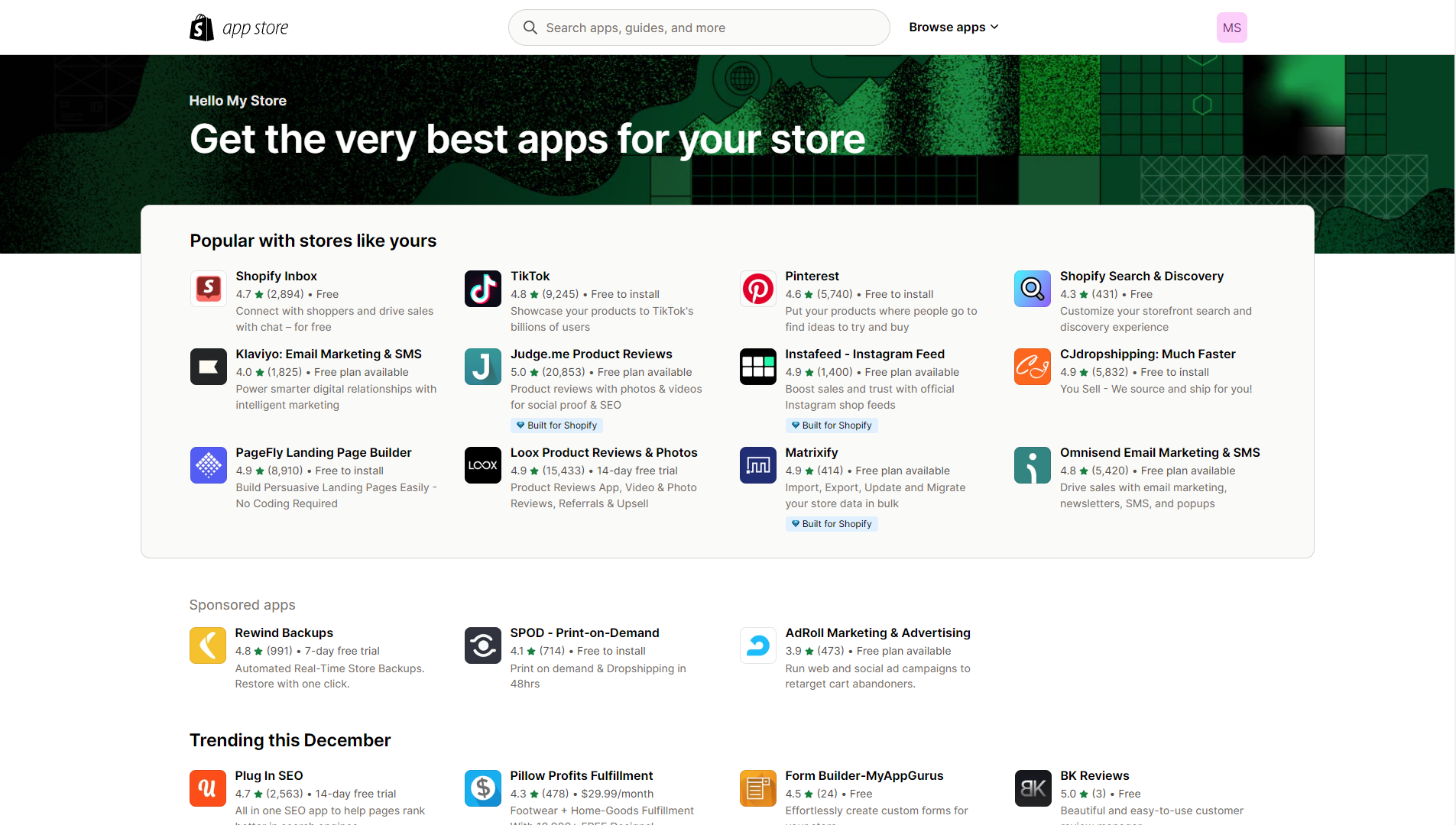
Marketing Features
Design FunctionalitiesRepresents how well each platform allows for creative design and customization of websites.Score Components:
- Template Variety (30%): Range and quality of design templates.
- Customization (30%): Flexibility and options for design alterations.
- User Interface (20%): Ease and intuitiveness of the design process.
- Responsiveness (10%): Adaptability to different devices and screen sizes.
- Innovation (10%): Unique design features and tools.
 8.8
8.8
 5.7
5.7
🏆
Overall Winner: Shopify
. Shopify stands out for its comprehensive ecommerce-focused marketing tools, especially in social media integration and ad campaign management. SubHub, while offering a decent set of marketing features, lacks social media integration, which is a significant disadvantage in today’s digital marketing landscape.

|

|
|
|---|---|---|
|
SEO Tools |
|
|
|
Email Marketing |
|
✓ (through integration) |
|
Blogging |
|
|
|
Social Media Integration |
Advanced integration for selling directly on social platforms |
✗ |
|
Analytics and Reporting |
Detailed analytics for in-depth insights |
Basic analytics through Google Analytics integration |
|
Ads and Promotions |
Google Ads integration; sophisticated ad campaign management |
Basic promotional codes and coupon codes |
Customer Support
Customer supportEvaluates the quality and availability of support options.Score Components:
- Response time (40%): Speed of support responses.
- Support quality (30%): Effectiveness and helpfulness of the support.
- Availability (20%): Range of support channels (phone, chat, email).
- Resource richness (10%): Quality of self-help and educational materials.
 8.6
8.6
 6.3
6.3
🏆 Winner: Shopify
. Comparing Shopify vs SubHub, Shopify stands out with its 24/7 customer support available through chat, email, and phone. Shopify also offers extensive tutorials, a vibrant community forum, and a marketing blog that provides valuable business growth strategies. For enterprise-level businesses, Shopify provides dedicated account managers, priority support, and additional resources, ensuring comprehensive support for all users.
SubHub, on the other hand, offers customer support primarily through email and a support portal for detailed inquiries. While it provides an FAQ section for immediate answers, it lacks the 24/7 availability and extensive resources that Shopify offers. SubHub does not have specific support options for enterprise-level businesses, which may be a limitation for larger organizations. Overall, Shopify’s robust and accessible support system makes it the clear winner in this category.
Security
SecurityLooks at the platforms’ security measures and data protection.Score Components:
- Data protection (40%): Safeguards for user and customer data.
- SSL and encryption (30%): Implementation of secure connections.
- Compliance (20%): Adherence to industry security standards.
- Regular updates (10%): Frequency of security updates and patches.
 9.0
9.0
 4.0
4.0
🏆
Winner: Shopify
. Shopify’s security measures are comprehensive and robust, ensuring the safety of user data and website security. They prioritize data privacy and security through secure infrastructure, encryption, and limited access. They comply with data privacy regulations, practice data minimization, and ensure user control and transparency. Additional security measures include two-factor authentication, regular audits, and a dedicated incident response team. Shopify also ensures website security with SSL certificates encrypting data, verifying website identity, and offering SEO benefits. Free SSL certificates are provided, with options for upgrades. The built-in Web Application Firewall filters and blocks threats, and users can add third-party firewalls for extra control and security.
On the other hand, SubHub does not provide detailed information about its website security measures, which is a significant drawback. While they do outline their approach to data privacy in their privacy policy, the lack of information about website security measures is concerning. Therefore, Shopify is the clear winner in terms of security.
AI Capabilities
AI capabilitiesMeasures the effectiveness of AI-driven features and tools.Score Components:
- Automation efficiency (40%): Impact of AI on streamlining processes.
- Personalization (30%): AI-driven customization for users or customers.
- AI-Assisted design (20%): Role of AI in website design and functionality.
- Data analysis (10%): Use of AI in interpreting user data and analytics.
 7.9
7.9
 0
0

|

|
|
|---|---|---|
|
Personalized Design |
Shopify AI Builder offers personalized design suggestions |
|
|
SEO Optimization |
AI-driven recommendations for better search engine visibility |
|
|
Customer Behavior Analysis |
Advanced analytics to understand customer preferences |
|
|
Sales Predictions |
AI-powered sales forecasting tools |
|
|
Inventory Management |
AI tools to assist in efficient inventory handling |
|
|
Content Generation |
AI assistance in creating and optimizing site content |
|
🏆 Winner: Shopify
. Shopify, with a score of 7.9, utilizes AI mainly to enhance the ecommerce experience. Its AI features focus on customer behavior analysis, personalized shopping experiences, inventory management, and sales predictions.
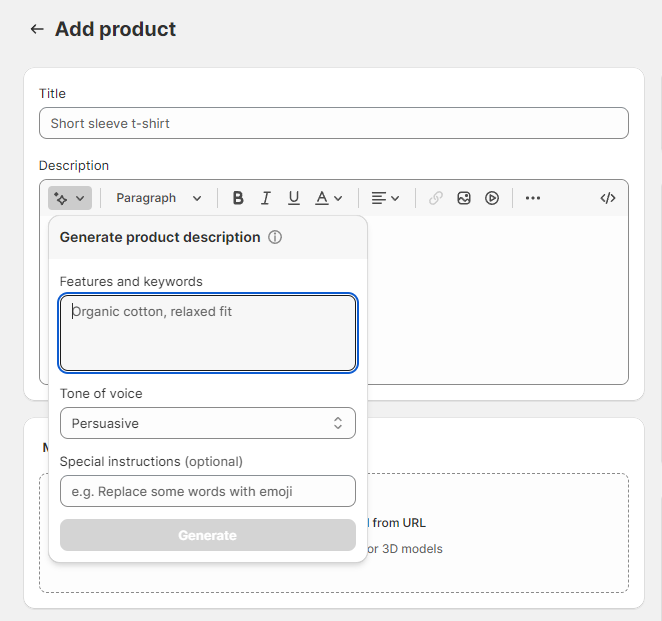
SubHub, on the other hand, does not have any AI capabilities. This is a significant disadvantage for SubHub as AI can greatly enhance the user experience and efficiency of managing a website.
User Management
User ManagementAssesses the platforms’ capabilities in managing user roles, permissions, and accessibility.Score Components:
- Role Customization (40%): Flexibility in creating and defining user roles and
permissions. - Ease of Management (30%): User interface and tools for managing users.
- Access Control (20%): Effectiveness of access control measures for different user
levels. - Scalability (10%): Ability to manage a growing number of users efficiently.
 6.5
6.5
 5.2
5.2
🏆 Winner: Shopify
. Managing your online team with Shopify and SubHub involves different approaches to website editing access.
-
Shopify enforces staff account limits based on plans, ranging from 2 to 15, with Shopify Plus offering unlimited
accounts. Collaborators with limited access are also an option. - SubHub allows multiple user accounts, however the platform does not specify how many accounts are supported.
Shopify User Roles and Access Levels:
| Role | Description | Access Highlights |
|---|---|---|
| Store Owner | Full control over store | Manage products, orders, discounts, payments, apps, settings. Create and manage staff accounts. |
| Staff | Configurable access by owner |
Add/edit products, manage orders, fulfill orders, manage customers, update content. Access level can be customized by the owner. |
| Collaborator | Limited access for external partners | View and manage specific sections like blog or product categories. Cannot access full store settings. |
SubHub User Roles and Access Levels:
| Role | Description | Access Highlights |
|---|---|---|
| Administrator | Full access to the platform except for Homepage and Course Editor. | Can manage all aspects of the platform, including content, store, and member management. |
| Content Management | Focuses on managing and organizing content within the platform. | Can access and manage content-related features but does not have access to Homepage or Course Editor. |
| Store (access only) | Specializes in handling the platform’s store features. | Limited to store management functions; no access to Homepage, Course Editor, or member management. |
| Member Manager (access only) | Oversees member accounts, roles, and subscriptions. | Can manage members and their subscriptions but cannot access Homepage, Course Editor, or store management. |
| Origin Admin Email | The initial administrator with the highest level of access, including Homepage and Course Editor. | Exclusive access to Homepage and Course Editor, on top of what the Administrator role provides. |
Additional Features

|

|
|
|---|---|---|
|
SSL Certificate |
|
|
|
Custom Domain |
|
|
|
Free Custom Domain Included |
|
|
|
International Domains |
|
|
|
Mobile Responsive |
|
|
|
Page Speed |
|
|
|
Website Builder Mobile App |
|
|
|
Convert a Website To An App |
|
|
|
Website Analytics |
|
|
|
Multilingual Sites |
|
|
|
Multiple Users |
|
|
User Feedback
Shopify’s slightly higher rating on G2 Crowd can be largely attributed to its specialization in ecommerce. Its comprehensive features, ease of use, and robust customer support cater specifically to online businesses, leading to high user satisfaction among those seeking a dedicated ecommerce solution.
User feedback on SubHub presents a mix of positive and negative experiences, emphasizing the platform’s feature-rich environment and customizable templates. Users appreciate the flexibility and the quality of customer service, highlighting the platform’s continual updates and support as key benefits. However, some users express dissatisfaction with aspects such as the platform’s interface, lack of community features, and service fees for ticket resale. Concerns were also raised about the custom design service and mobile-friendly solutions taking longer than expected.
The making of this blog
We followed a clear, step-by-step process to write and research this article.
FAQ
Can I use Shopify for a membership-based model similar to SubHub?
Is SubHub a good alternative to Shopify for selling products?
How do Shopify and SubHub compare in terms of ease of use?
Which platform offers better support for marketing and SEO?
Can I migrate my site from SubHub to Shopify or vice versa?
Which platform is more cost-effective for a small business?










